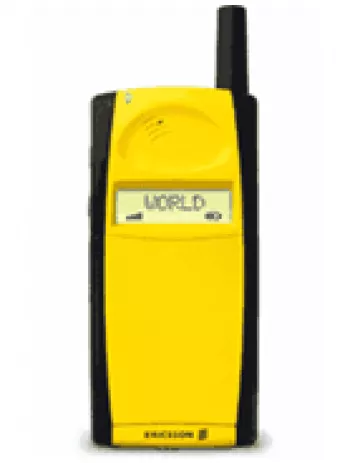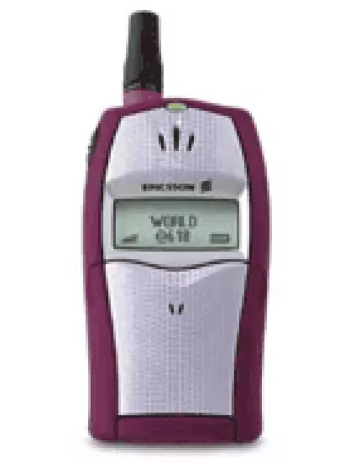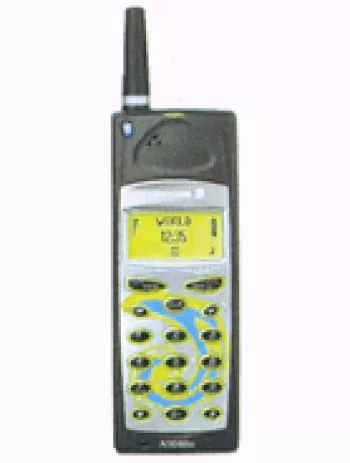
Overview of Ericsson PF 768
The Ericsson PF 768 was a significant device introduced in the late 1990s. It was part of the wave of mobile telephones that began to popularize mobile communication for the masses. Announced in 1997, this device is now discontinued, but it remains a noteworthy example of mobile phone technology of its time. It was designed as a feature phone, targeting users who required basic telephone functionality without the complexities of modern smartphones.
Design and Build
The Ericsson PF 768 featured dimensions of 105 x 49 x 23 mm (4.13 x 1.93 x 0.91 in) and weighed 135 g (4.76 oz). Its compact design made it portable and easy to carry around, fitting comfortably in the user's pocket. The device was built with a Mini-SIM card slot, essential for connectivity at the time.
In terms of aesthetics, the PF 768 was available in four colors, catering to users' personal preferences. The design was typical of its era, with a sturdy, durable build that could withstand everyday wear and tear.
Display
The phone had a basic alphanumeric display that showcased text with a resolution of 1 x 10 characters. This type of display was common in the 1990s and provided just enough information to manage calls and view text messages. The screen was not designed for detailed graphical content, as the main focus of the device was voice communication.
Network and Connectivity
The Ericsson PF 768 supported GSM technology, specifically operating on the GSM 1800 band. However, it lacked both GPRS and EDGE support, limiting its abilities to perform data-driven tasks, which were not the primary purpose of phones at the time. This phone did not support Bluetooth, WLAN, or USB connectivity, reflecting its focus on voice calls and basic SMS messaging.
Memory
Memory capabilities on the Ericsson PF 768 were limited, as expected from a feature phone of its era. It did not support additional card slots, which meant storage expansion was not possible. However, it did have the capacity to store up to 99 contacts, an adequate feature for users focusing on essential phone communication.
Sound and Alerts
Sound options on the PF 768 were fairly basic, offering monophonic ringtones and a composer for personalizing alert tones. It did not have a loudspeaker or a 3.5mm audio jack, which meant it was primarily used for calls through a standard earpiece.
Battery and Power Management
The phone was powered by a removable Nickel-Metal Hydride (NiMH) battery with a capacity of 550 mAh. This battery provided a stand-by time of up to 60 hours and a talk time of approximately 180 minutes. Although modest by today's standards, this battery life was reasonable for a device from the late 1990s, given its power usage focused primarily on voice communication without the power drain from modern applications.
Features and Functionalities
Though the Ericsson PF 768 lacked advanced features like cameras or a fully developed operating system, it included several practical functionalities. The device supported SMS messaging and had a simple interface for managing incoming and outgoing communications. Basic utilities such as a clock and an alarm were built-in, providing users with essential time-keeping functions.
The PF 768 did not feature games or downloadable applications, as multimedia content was not a focus for mobile phones at that time. Instead, the phone was designed to cater to straightforward communication needs. It supported multiple languages – 19 to be exact – making it accessible to a wide range of users globally.
Legacy and Conclusion
While the Ericsson PF 768 may not stand out when compared to today's smartphones, it serves as a historical piece in the evolution of mobile technology. It’s a reminder of an era when mobile phones were primarily used for voice communication, before the integration of internet and multimedia functionalities.
This feature phone paved the way for more advanced technologies by popularizing the concept of mobile communication. Its design, though simple, was effective for its time and illustrates how far mobile technology has come since then. For enthusiasts and collectors, the Ericsson PF 768 offers an insightful glimpse into the technological trends of the late 20th century.
Ericsson PF 768 Key Features
- Compact Dimensions: 105 x 49 x 23 mm, facilitating easy handling and portability.
- Lightweight Design: Weighs only 135 g, ensuring comfort during mobile use.
- Durable Mini-SIM Slot: Supports Mini-SIM cards commonly used in GSM networks.
- Alphanumeric Display: Simple 1 x 10 character display for essential information.
- Phonebook Capacity: Stores up to 99 contacts in its memory.
- Monophonic Ringtones: Offers basic ringtones with a composer option for customization.
- Multi-Language Support: Provides interface support in 19 different languages.
- SMS Messaging: Basic SMS functionality for text communication.
- Essential Functions: Includes clock and alarm options.
- Removable Battery: 550 mAh NiMH battery, providing up to 60 hours of standby and 180 minutes of talk time.
- Available in Four Colors: Allows personalization with a choice of four different colors.
Drawbacks of Ericsson PF 768
- No GPRS and EDGE support, limiting internet connectivity.
- Outdated GSM 1800 technology.
- Discontinued model, making it difficult to find parts and support.
- Heavyweight at 135 g compared to modern devices.
- Small display with only 1 x 10 character resolution.
- No expandable memory card slot.
- No camera functionality.
- No loudspeaker or 3.5mm audio jack for external sound output.
- Lacks modern connectivity features like WLAN, Bluetooth, and USB.
- No radio functionality.
- No gaming features.
- Basic battery with limited stand-by and talk time, using older NiMH technology.
View Also
More Phones
All Rights Reserved +14266 Phones © Mobilawy 2025

























